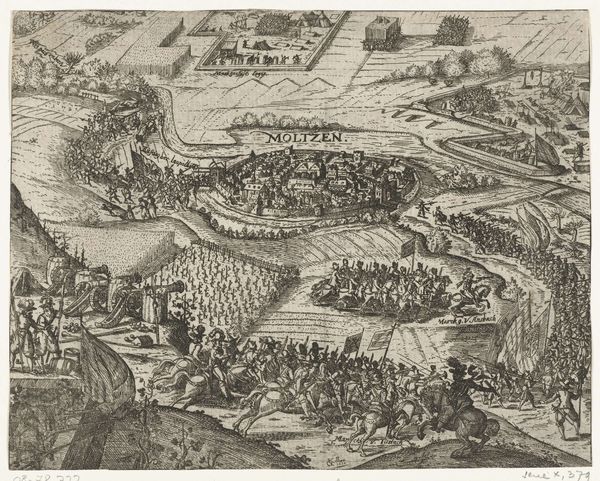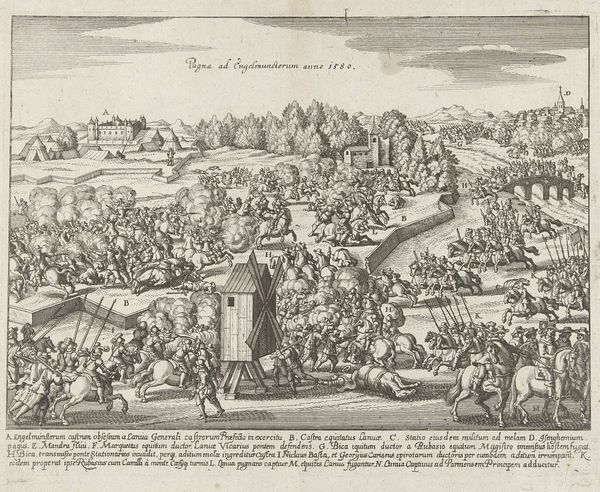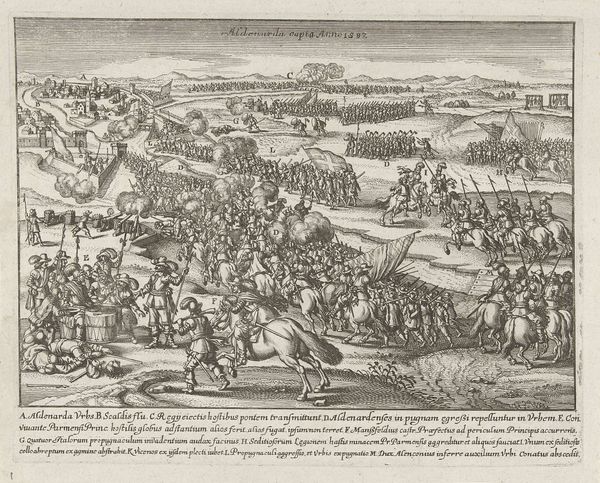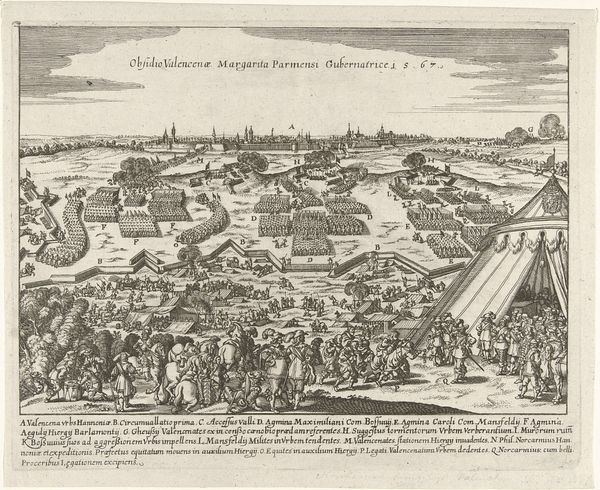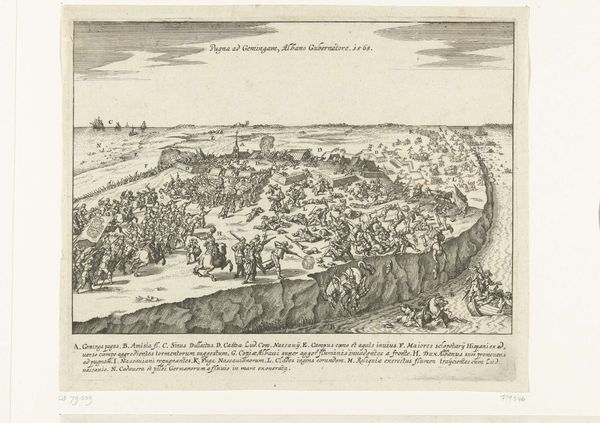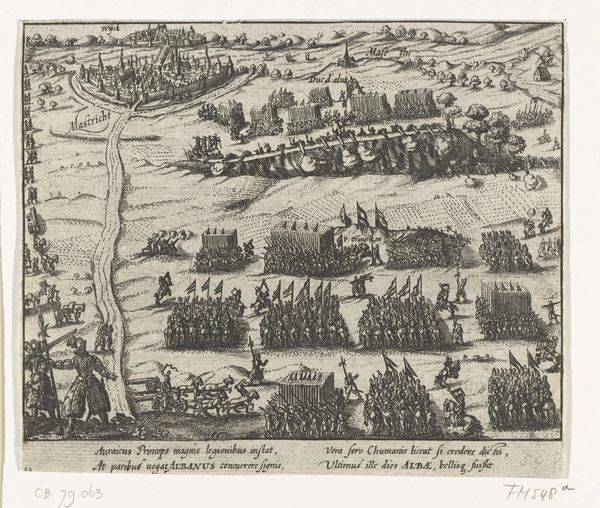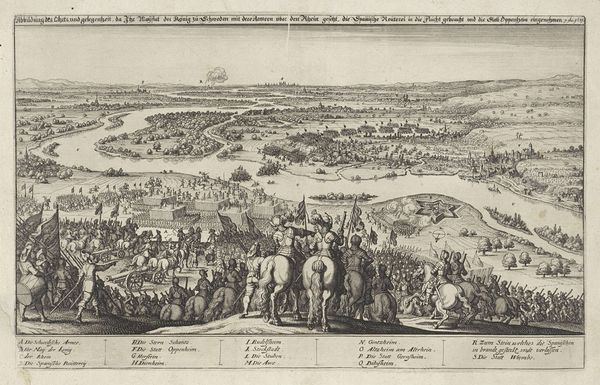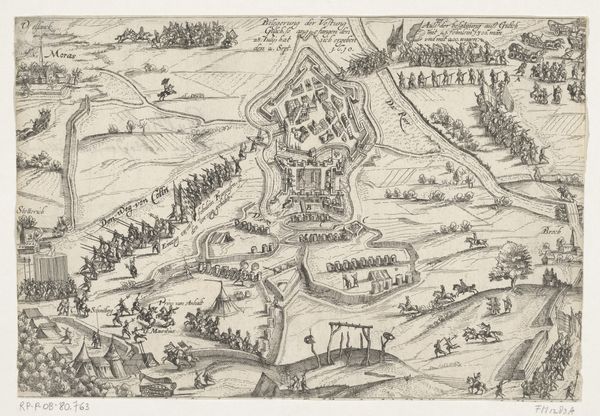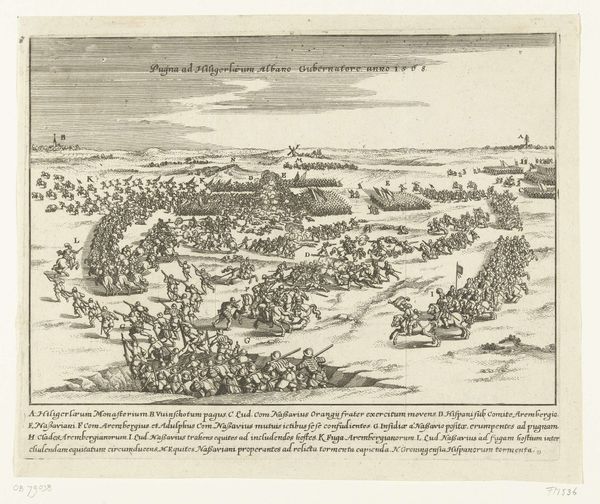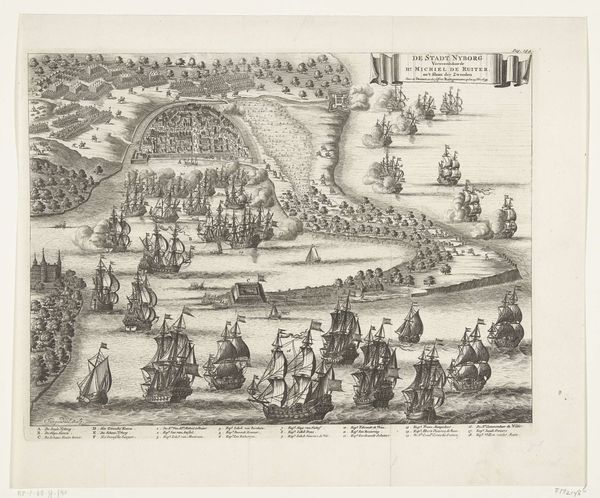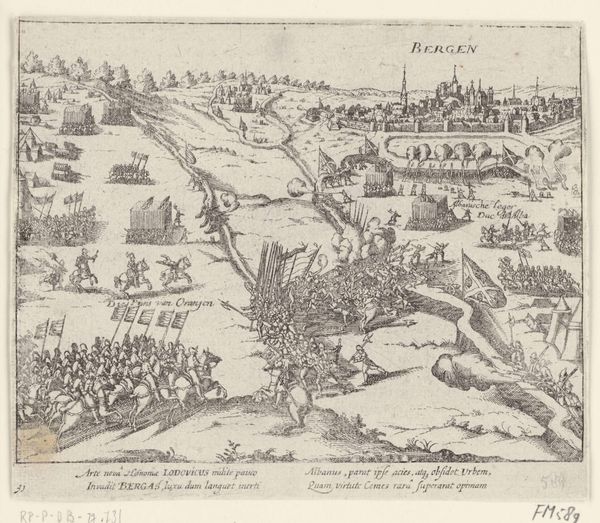
print, engraving
#
pen drawing
# print
#
pen illustration
#
pen sketch
#
old engraving style
#
landscape
#
figuration
#
personal sketchbook
#
sketchwork
#
pen-ink sketch
#
line
#
pen work
#
sketchbook drawing
#
genre-painting
#
history-painting
#
sketchbook art
#
engraving
Dimensions: height 164 mm, width 277 mm
Copyright: Rijks Museum: Open Domain
Antonio Tempesta made this print, Alexander the Great Crossing the Ister River, around the turn of the 17th century using etching. Here, acid is used to bite lines into a metal plate. Consider the process: Tempesta would have coated the plate with wax, drawn through it, and then immersed it in acid. The longer the immersion, the deeper the line. And the deeper the line, the more ink it holds. So, the richness of the blacks here speaks to the expertise of the artist in controlling this chemical process. But the image itself? It’s all about the labor of war. A mass of soldiers, each one of them hand-rendered, populate the scene. They are crossing a river, presumably to conquer more territory. The print celebrates military might, but also implicitly acknowledges the human cost of that ambition. It's a reminder that art is always entangled with the social and political context of its making.
Comments
No comments
Be the first to comment and join the conversation on the ultimate creative platform.

